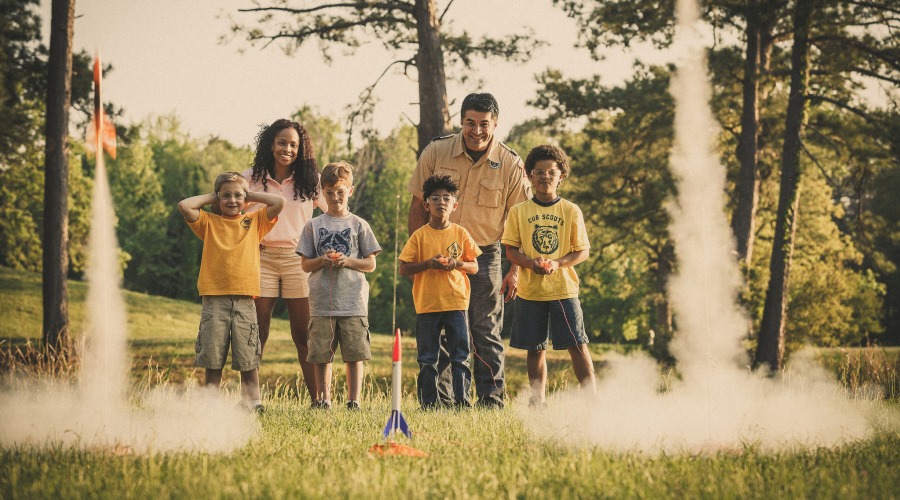
This Is How We Will Grow Scouting
Last month, I shared my belief that a comprehensive business plan would help ensure we achieve our objectives, reconcile our dollars and cents and grow our organization for future success. I explained that as part of that plan, we should have a dedicated growth component. Today, I’d like to go into a little more detail on what I think that growth plan should look like, based on many ideas from volunteers and staff from around the nation.
First, a little background: In 1972, the BSA had more than 4.8 million registered youth members. Last year, we had just 2.4 million. That’s a 50 percent decline in just over 40 years. Clearly, that’s not a trend that any of us want or can afford to see continue because it means fewer and fewer of our nation’s young people — our future — are benefiting from the character-building programs Scouting offers.
To reverse this decline, we need to develop a growth strategy that is based on achieving the objectives of our local councils, and I believe our first priority should be maintaining — and strengthening — our proven legacy programs. This means evolving the quality of our programs so that we are delivering a high-energy Scouting experience that reflects the interests of youth today while also representing our key Scouting values and methods. The following areas of focus — designed to help us achieve this evolution — are key components of the draft growth plan that our officers will be discussing next week at our board meeting:
- We must ignite an Exploring Explosion. This coming January, we intend to launch Exploring Explosion, a mission-driven, nationwide program that will provide youth with real-world, hands-on career experience in partnership with thousands of organizations in the public and private sectors. Delivered in conjunction with Learning for Life, the program has the potential to significantly attract more youth who are interested in career and leadership development, and engage more volunteers and professionals to support these new members. By actively participating in Exploring Explosion, councils stand to advance their local programs and attract new board members, financial resources and new capacity designed to help build traditional Scouting programs.
- We need to innovative — truly innovate — a more effective entry point for introducing families into Scouting. I think we can do a better job when it comes to making Scouting more inviting to our youngest Scouts and their parents. By March, I’d like us to have determined an ideal approach for introducing Scouting to the whole family. As our demographics change, we know that recent immigrant communities do not have a generational involvement and we need to introduce them to our values proposition. As part of this approach, we also need to consider how we help these young Scouts advance through their programs in a timely and meaningful way that keeps them interested. This means helping them feel accomplished and also continually challenged to reach achievable goals. Additionally, local councils have embarked on innovative programs to reach out to younger youth. We need to truly study this and determine if this is helpful or harmful to overall growth in the program. In every case, we want to innovate while not doing so at the expense of our powerful brand or the values component of Scouting.
- We should continue to develop and expand STEM Scouts. We have seen terrific results with recruitment and retention in the pilot program that was launched in the Great Smoky Mountain Council two years ago and we hope to see similar results from the 12 additional pilot councils we brought into the program this summer. Our initial metrics point toward a real hunger among youth and their parents for this type of intellectually challenging program that is designed to teach and create a passion for skills required of the next generation of scholars and industry leaders. We should continue our STEM Scouts beta test, fine tune the program as appropriate and take a strategic approach to expanding it across Scouting’s footprint.
- Finally, we must take a “rifle approach” to growing our ranks. The BSA must be committed to giving all young people the opportunity to join Scouting, regardless of their circumstances, neighborhood or ethnic background. I’d like to see us strengthen our marketing efforts by adopting more of a rifle approach to community outreach, targeting more precisely the underserved markets we want to reach. We will be able to do this in part through an enhanced ScoutReach program which we will use to help us achieve our goal of streamlining Cub Scouting. I also think we have tremendous opportunities to better engage with military families, and in markets with low participation, i.e. our largest cities. In many cases our current program works just fine; our delivery, however, will need to undergo some changes to make it easier for parents and youth to access what we offer.
Working closely with our board, I will continue to seek input as the goal of the National Service Center must be to provide the content and support that our councils feel will help them achieve their objectives. But the historical decline in Scouting’s membership is a trend that we must correct, and doing so will require strategic thinking, creativity and hard work. Although it will be challenging, I also think it will be a lot of fun to inject new life into our programs and processes — not to mention new faces into Scouting who are eager to absorb all the wonderful lessons and skills that our organization stands to teach them.
I will keep you posted on the progress of our plan.
Let’s grow.
Mike



